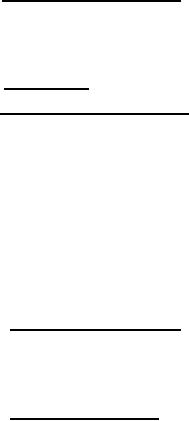 |
|||
|
|
|||
| ||||||||||
|
|  MIL-G-24477(SHIPS)
3.4.1.1 All voltage regulator components and parts, except the manual control unit,
the voltage adjusting unit, the control switch, field flashing switch, and droop compensation
transformers shall be mounted in one box. The control units and switches shall be suitable
for back of board mounting, front of board operation.
3.4.2 Static exciter components shall be suitable for mounting within the switchboard
enclosure unless otherwise specified (see 6.1). Power rectifiers, if desired may be mounted
in the generator cooling air stream provided they are readily accessible for examination
and replacement.
3.4.3 Separate current, potential, and combination transformers shall be used with
each regulator-exciter system and no other burden shall be placed on the transformers.
Transformers shall be ungrounded.
3.4.4 Semi-conductor devices.
3.4.4.1 All semiconductor devices shall be selected from MIL-STD-701 and shall conform
to the requirements of MIL-S-19500. Nonlisted devices shall require .specific acceptance
by the command or agency concerned as required by MIL-E-917. All rectifiers shall be of
the silicon type. All devices shall be individually replaceable.
3.4.5 Capacitors. Capacitors shall be selected and applied in accordance with MIL-E-917.
3.4.6 Resistors and rheostats. Resistors and rheostats shall be selected and applied
in accordance with MIL-E917.
3.4.7 An external source of d.c. power will be available and may be used for field
flashing of the a.c. generator. If field flashing is provided from an a.c. source through
rectifiers, the flashing switch shall open both the a.c. and d.c. sides of the circuit in
the "off" position.
3.4.8 A "De-energize" position shall be provided on the regulator control switch in
addition to the "Auto" and "Manual" positions. This "De-energize" position shall operate
in the control circuitry such as to result in no generator output voltage except from residual
magnetism.
3.4.9 Duplicate but electrically isolated control power transformers (where used)
shall be provided for the automatic and manual control circuits and shall be mounted adjacent
to each other to permit back-up of one by the other by simple wiring changes.
3.4.10 Short circuit current. The excitation and voltage regulation system shall provide
excitation to the generator under both single phase and three phase short circuit conditions.
The excitation shall be such that, for a three phase short circuit, the sustained line current
shall be at least 3.2 per unit. In addition, the system shall be capable of maintaining the
short circuit current for a period of 30 seconds, and shall restore normal voltage upon
removal of the short.
3.4.11 Generator overload. The excitation and voltage regulation system shall provide
necessary excitation and control to maintain generator terminal voltage within 5 percent of
rated voltage with the generator operating at 150 percent rated current at 0.5 p.f. lagging
and rated frequency for 1 minute.
3.4.12 The excitation and voltage regulation system shall not contribute more than 0.5
percent to the generator deviation factor, nor more than 0.5 percent to any individual voltage
harmonic.
3.4.13 Generator loads will normally be of lagging p.f. between 0.5 and 0.8. It is
possible, however, that generators may occasionally operate at leading p.f. or greater
lagging p.f. At rated KW load, at any p.f. from 0.8 lagging to 0.8 leading, the system must
be capable of maintaining generator terminal voltage within one percent of the required
normal 0.5 to 0.8 lagging p.f. steady state voltage regulation band.
3.4.14 The excitation and voltage regulation system shall meet the requirements for
type I vibration of MIL-STD-167.
17
|
|
Privacy Statement - Press Release - Copyright Information. - Contact Us |